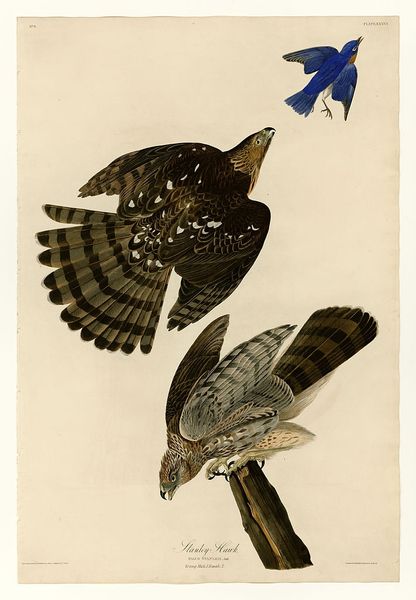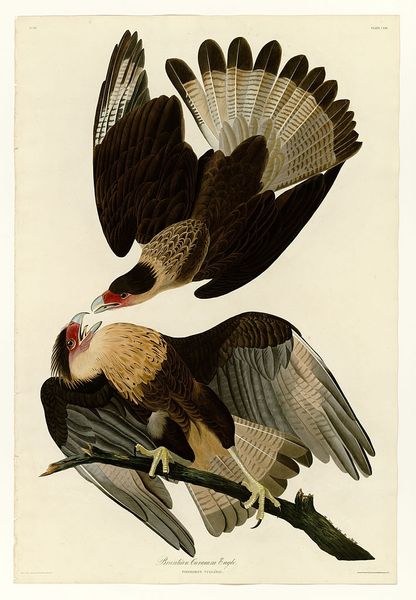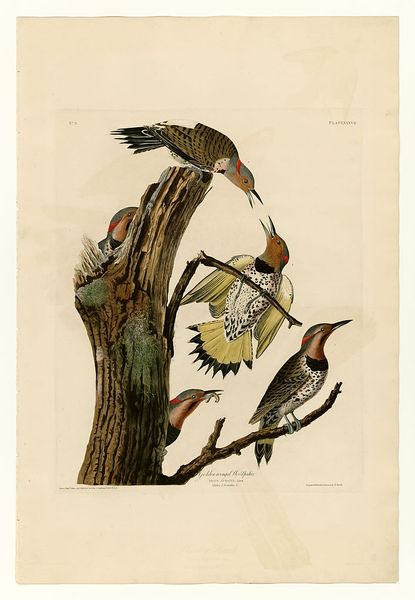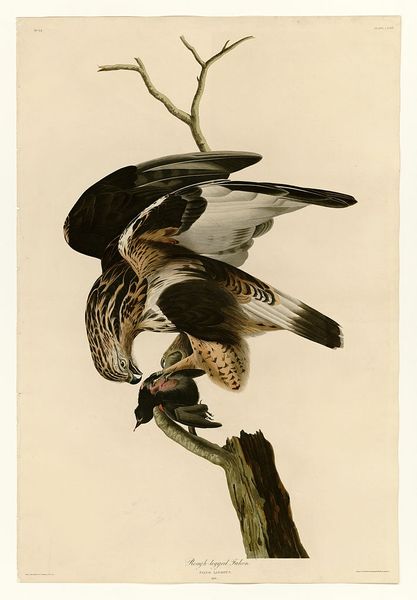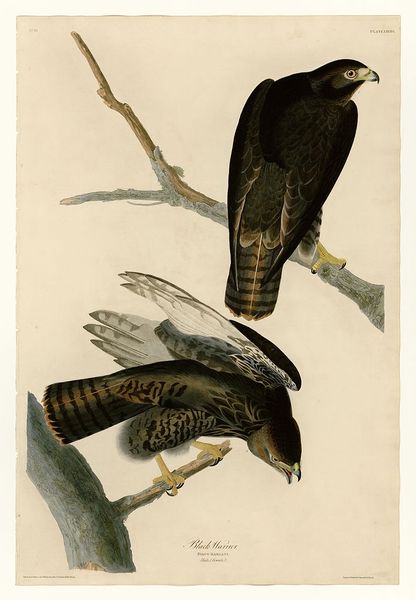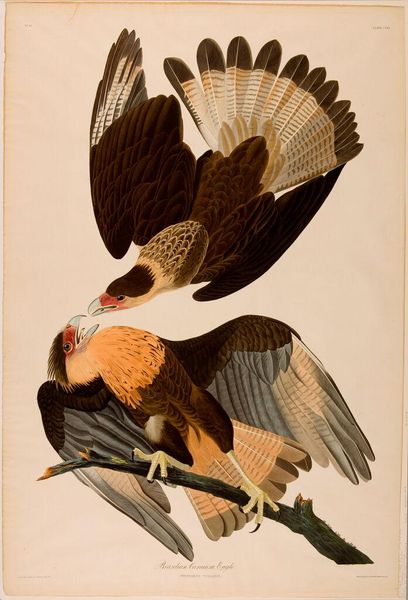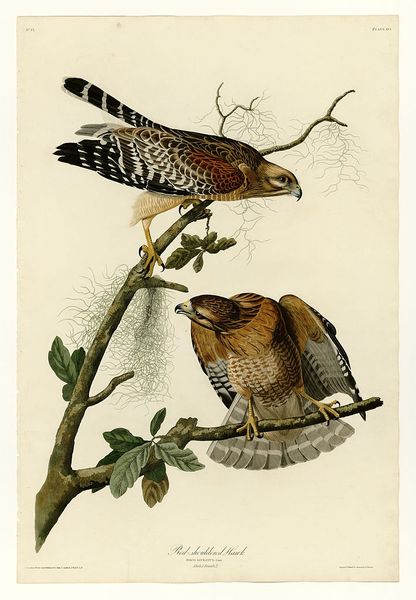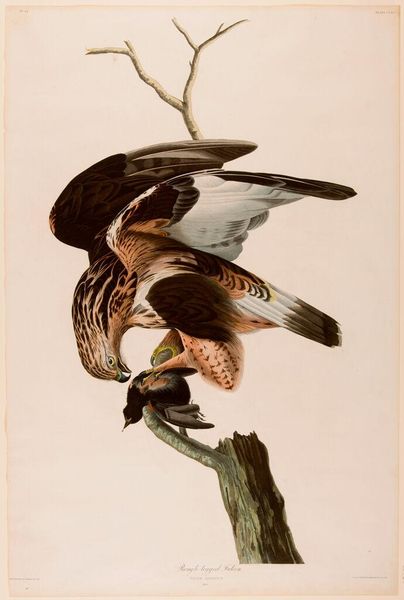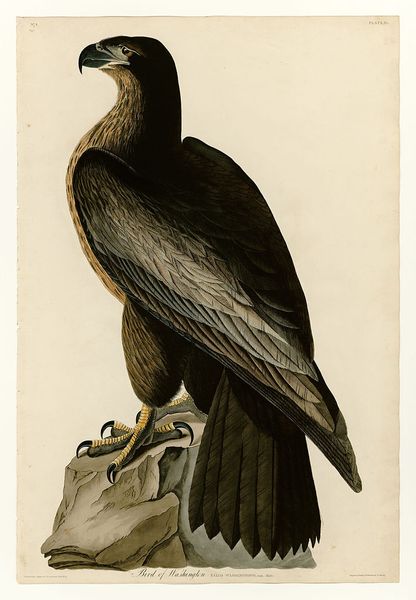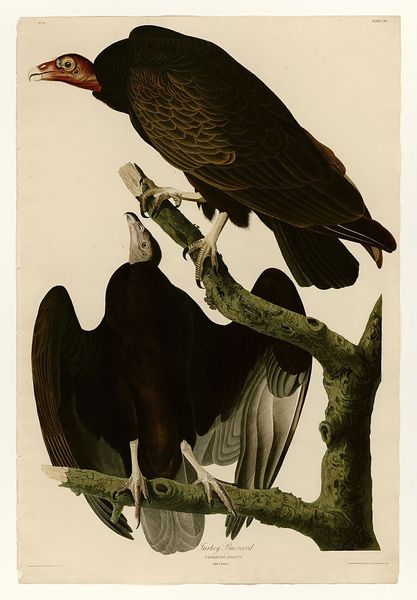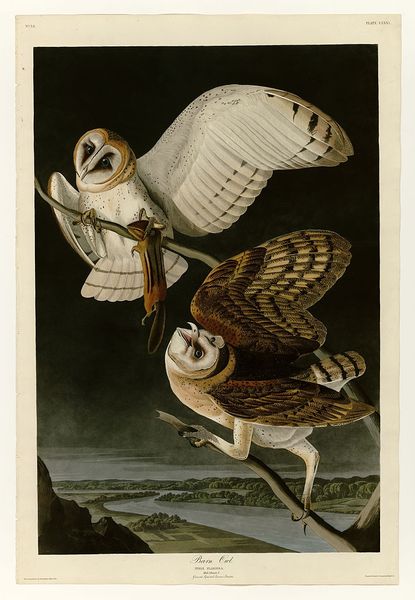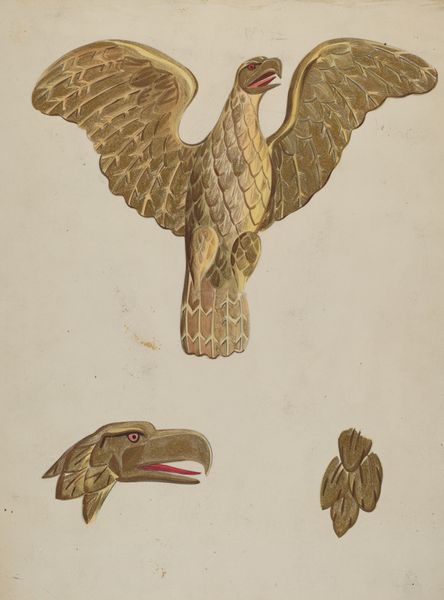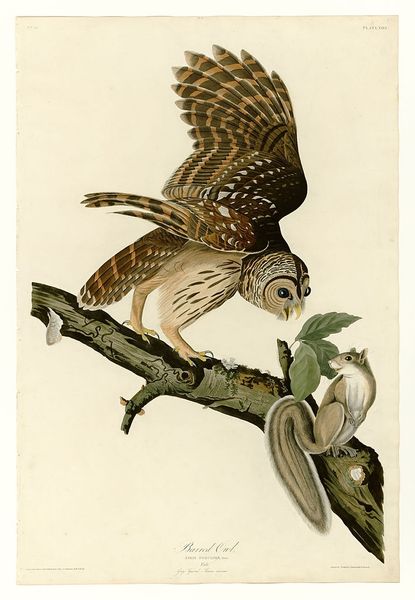
drawing, painting, paper, watercolor
#
portrait
#
drawing
#
painting
#
landscape
#
bird
#
paper
#
watercolor
#
framed image
#
romanticism
#
animal drawing portrait
#
watercolour illustration
#
realism
Copyright: Public domain
Curator: This compelling watercolor by John James Audubon is entitled “Plate 51. Red-tailed Hawk.” What strikes you immediately about it? Editor: It’s undeniably dramatic. The tension between predator and prey is palpable. The hawk's dominance is portrayed through the sheer force of its downward gaze. You can feel the weight of its power. Curator: Indeed. Audubon was deeply invested in documenting American birdlife. He actually aimed to paint every bird in North America. He believed strongly in documenting through experience. Editor: Which makes you consider what “documenting” meant in the early 19th century. Audubon's methods included collecting specimens—killing birds to study and paint them. Today, we question such practices, thinking about preservation and the ethics of representation. Is this knowledge or exploitation? Curator: That tension between appreciation and potential harm certainly haunts the image. Look at the minute details he captures – the texture of the feathers, the sharpness of the talons. He wanted a scientific accuracy married with aesthetic beauty. Consider too that Audubon's work contributed to a growing awareness, among certain segments of the population, of the natural world that eventually would help spur conservation movements. Editor: True. But conservation itself has a complex history tied to land ownership and indigenous displacement. It prompts us to think critically about how nature has been historically framed, commodified, and whose interests have been prioritized in the process. The violence here seems inescapable—built into the very act of creation. Curator: It's a good point that speaks to larger discussions about how we interpret nature, progress and ultimately what values are perpetuated through iconic images such as this one. Editor: Right, this isn't simply a painting of a hawk, but a document deeply embedded within social, historical, and ethical complexities, whether Audubon intended it to be or not. Curator: That's a great challenge for us today, really, to read it critically, rather than just passively receive its aesthetic merit. Editor: Precisely. Recognizing that these depictions shape not just what we see but how we understand the world around us.
Comments
No comments
Be the first to comment and join the conversation on the ultimate creative platform.
